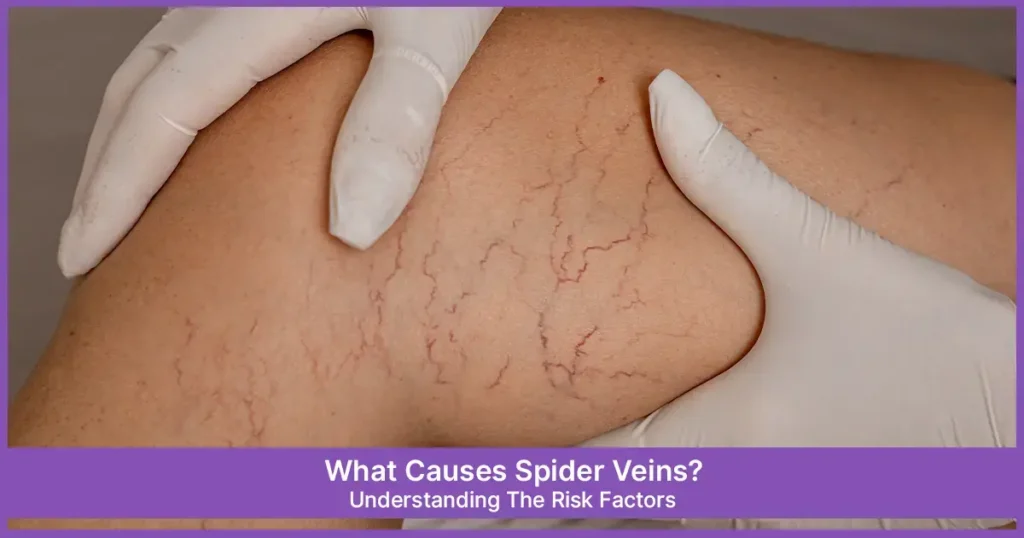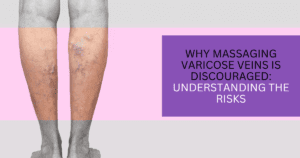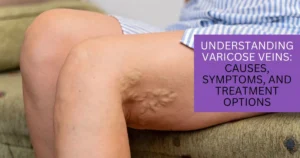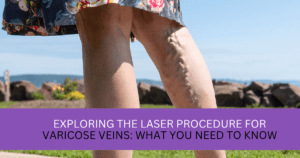Ever wonder if spider veins run in the family? You’re not alone. Many individuals ask the same question. In fact, research shows that around 90% of individuals suffering from spider veins have at least one family member who has dealt with it as well. But nothing to fret about—just because it’s hereditary doesn’t mean it’s set in stone. While family background plays a big role, it’s not the only factor. Lifestyle, age, hormonal shifts, and even your job or daily habits can influence whether or not thread veins appear. Let’s understand the causes and risk factors of spider veins.
What are Spider Veins?
Spider veins are thin and twisted blood vessels that show up just beneath the skin. You will often spot them in red, purple, or blue shades, and they usually occur on areas like your legs, ankles, feet, or even your face.
Spider veins are smaller than varicose veins. Varicose veins are more noticeable and tend to affect deeper veins. Thread veins are more surface-level but still noticeable enough to catch your eye.
Explore the Symptoms
The telltale sign of spider veins is their prominent purplish-blue web-like appearance, weaving across your skin.
While some people don’t complain of any discomfort at all, others might experience symptoms, including:
- A heavy or achy sensation in the limbs
- A burning sensation
- Throbbing or pulsing that seems to linger
- Muscle cramps and heavy swelling in the lower legs
- Irritation or pain after standing or sitting for long hours
- Itchy skin that’s difficult to ignore
- Skin discoloration or areas that look darker or blotchy
Causes of Spider Veins|In-Depth Guide
Do you know that weak or damaged valves are the primary contributor to spider veins?
Veins transport the blood of the whole body to the heart. This process becomes tiresome for veins in the legs.
The leg muscle contractions and elasticity of the vein walls help blood flow to the heart efficiently. Tiny vein valves eventually close to stop blood from flowing backward.
Weak or damaged valves cause blood to pool up in the veins. This causes them to deeply stretch and twist, forming spider and varicose veins.
The underlying causes and risk factors are briefly discussed below.
Genetics: A Family Factor
Genes are one of the key factors in the formation of spider veins. With a family history of thread veins, you’re more susceptible to vascular problems. Genetic predisposition is an obvious risk factor that is hard to control. Individuals with a family history of venous issues have a higher chance of developing spider veins.
Age: Time is an Obvious Factor
Aging gives room to spider veins. In older age, the veins lose their elasticity, and the valves deteriorate, making blood flow difficult. This eventually triggers blood pooling in the veins, causing them to expand and develop spider veins.
Hormonal Shifts: The Silent Threat
Hormones play an influential role in the development of spider veins, especially in females. Pregnancy, puberty, menopause, and birth control pills can all be the catalyst for hormonal fluctuations that disturb the veins. A pregnant woman’s body produces more progesterone, which causes the walls of veins to relax, leading to excessive pressure on the blood vessels and the formation of thread veins.
Prolonged Standing or Sitting: A Recipe for Disaster
If your job involves standing or sitting for long hours, you may be at a higher risk of spider vein formation. Immobility can cause the blood to pool in the lower legs. This places extra pressure on the veins, and over time, they may become weakened, forming spider veins. People who have to perform jobs standing for long hours, such as retail workers, lecturers, and healthcare professionals, are more vulnerable to developing spider veins. Similarly, individuals who sit for hours, such as desk job workers or frequent travelers, are also at higher risk.
Bulky Body: Extra Weight, Extra Pressure
Carrying extra weight puts an additional burden on your veins. Obesity triggers spider veins, particularly in the lower legs. The added pressure from the excess weight increases the fragility of the vein walls, forming the Surface veins. Maintaining a balanced weight and adopting an appropriate lifestyle can reduce the risk level and improve overall vascular health.
Sun Exposure: Open Threat to Veins
Excessive sun exposure deteriorates blood vessels, particularly in the face. The UV rays of the sun can damage your skin and reduce the elasticity of the veins, making them more vulnerable to spider veins. While sunburns mostly show up in skin damage, sun exposure for long hours can negatively affect vascular health. Those with a higher risk of thread veins should wear sunscreen to protect their skin from UV damage.
Pregnancy: The Vein-Compromising Condition
Pregnancy is one of the risk factors that trigger spider veins. A dramatic increase in blood volume is mostly obvious in pregnant women, which can put excessive pressure on the veins, especially in the legs. An expanded uterus compresses the veins, causing blood to pool and the formation of Surface veins. Though these veins will gradually fade after childbirth.
Injury: A Physical Blow
In some cases, a skin injury or trauma can develop spider veins. Sometimes damaged veins due to an accident or injury can become enlarged or distorted, resulting in the development of Surface veins. Additionally, complex medical phenomena that impair circulation, such as blood clots, can also cause vascular swelling, making veins more visible.
Comprehensive Spider Vein Treatment
There are some practical and proven lifestyle modifications to adopt, also.
- Don’t wear high heels and congested hosiery.
- Keep shifting your sitting or standing posture.
- Eating a low-salt diet with high-fiber food.
- Exercising regularly.
- Elevate your legs when lying or sitting down.
- Managing your body weight.
Have you recently experienced surface veins or have been bearing them for a while? Don’t fret. Experiencing even worse symptoms with this condition also comes with help. A skilled and professional vein doctor examines spider veins and suggests comprehensive treatment options to help you look and feel your best. Vein care specialists have the expertise to professionally treat these stubborn veins. Now let’s follow these valuable insights!.




